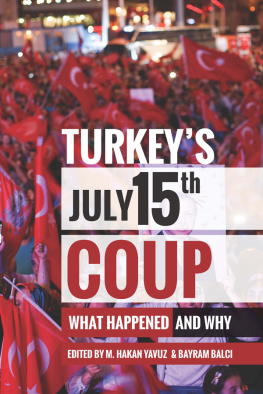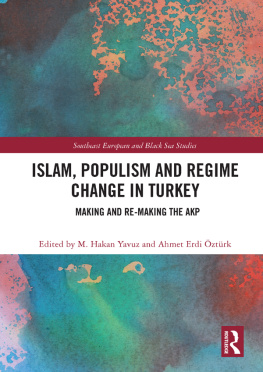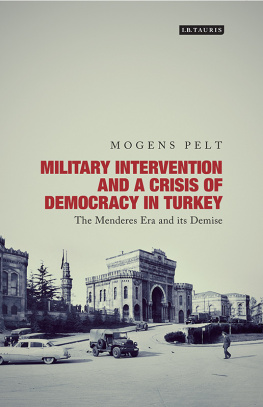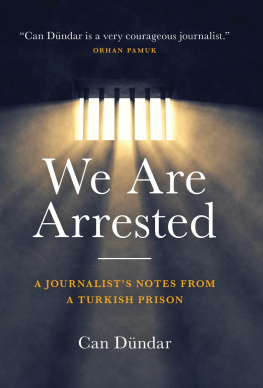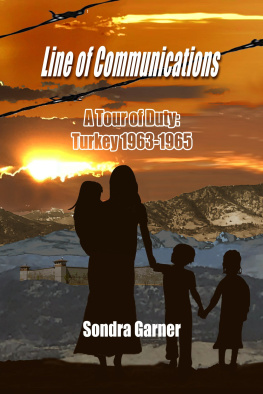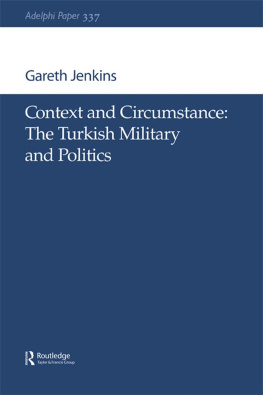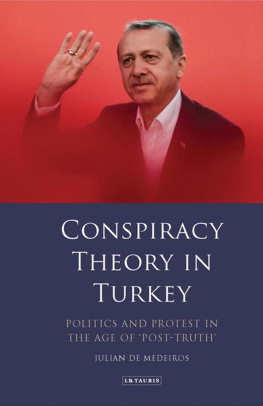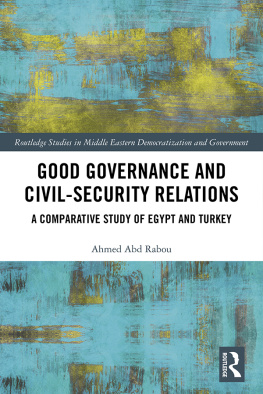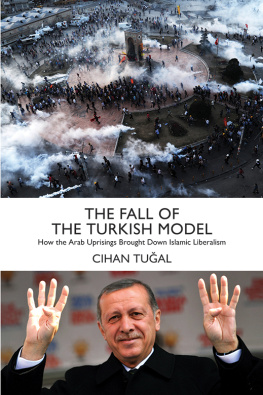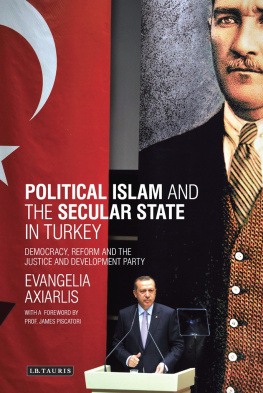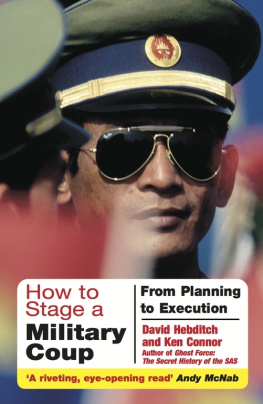Copyright 2018 by The University of Utah Press. All rights reserved.
Names: Yavuz, M. Hakan, editor. | Balc, Bayram, editor.
Title: Turkeys July 15th coup : what happened and why / edited by M. Hakan Yavuz and Bayram Balc.
Description: Salt Lake City : The University of Utah Press, [2017] | Series: Utah Series in Middle East Studies | Includes bibliographical references and index. |
Identifiers: LCCN 2017051651 (print) | LCCN 2017052782 (ebook) | ISBN 978-16-07816-07-2 () | ISBN 978-16-07816-06-5 (pbk.)
Subjects: LCSH: Glen Hizmet Movement. | Glen, Fethullah. | Erdogan, Recep Tayyip. | TurkeyHistoryAttempted coup, 2016. | Coups dtatTurkey21st century. | DemocracyTurkey. | TurkeyHistory21st century. | TurkeyPolitics and government21st century.
Classification: LCC DR603 (ebook) | LCC DR603 .T8376 2017 (print) | DDC 956.104/12dc23
Introduction
The Glen Movement and the Coup
M. HAKAN YAVUZ and BAYRAM BALCI
This volume examines the Glen movement after the failed coup of 2016 in Turkey. Contributions cover three interrelated topics regarding the Glen movement with a specific series of questions.
1. The Glen Movement. Is there a single Glen movement or several in differing contexts and conditions? What has been the main objective of the movement? Did the goals and means of the movement change as it became more established and secure? What was the nature of the alliance between the Glen movement and the Justice and Development Party (AK Party)?
2. The Coup of 2016. Did the Glen movement mastermind and become involved in the July 15 coup attempt? If it did, as evidence indicates, what does this tell us about the goals and strategies of the movement?
3. Methodological and Ethical Issues. What did scholars of the Glen movement ignore in their earlier study of the movement? What can scholars of the movement learn from the current revelations of the secrecy, hierarchy, and cell-like organizational structure of the movement? What is the responsibility of researchers in accepting and legitimizing an Islamist movement in a society? To what extent did the Glenists manipulate the scholarship on the movement through funding, lobbying, and establishing chairs of Glen studies in different countries? What are the main consequences of the coopted scholarship on the movement?
The contributors to this volume have carried out fieldwork on the Glen movement and have published books, articles, and detailed op-ed The Balkans and Central Asia were crucial in the internationalization of the movement.
Yavuz Cobanolu, who produced the first dissertation on Glen in Turkish, is joined by Joshua Hendrick, Berna Arslan, Caroline Tee, David Tittensor, Bekim Agai, and Kristina Dohrn, all of whom wrote their dissertations on varying dimensions of the Glen movement and have published major peer-reviewed academic works.
These scholars have also examined how and under what conditions the movement has managed its major transformation. However, they are uniformly astonished by the clash between the Glen movement and the AK Party of Recep Tayyip Erdoan: no one expected a bloody conflict between the two entities. Yet in retrospect the collision was perhaps inevitable. The December 2013 corruption probes, but more crucially the coup dtat attempt of July 15, 2016, represent turning points in the life of the Glen movement. The question for scholars examining the movement is why and how did the once-restrained Glen movement come into confrontation with the government of Erdoan? What motivated the Glenists to confront Erdoan, his public identity, and his family?
To answer these questions and to understand the connection between the attempted coup dtat and the Glen movement, as well as to consider how this major disturbance in Turkish history will affect the future of the movement, a workshop was organized at the University of Utah in October 2016. We invited major scholars of the Glen movement to explore such questions in depth. This book evolved from that workshop.
THE POLITICAL CONTEXT OF THE STRUGGLE
In order to provide a better framework for the clash of the Glenists and the AK Party, it is important to have a sociopolitical context for the formation, evolution, and power struggles of the Glen movement by outlining the historical background of the mutually constitutive relationshipbetween society and the state on one hand, and Islam and secularism on the other.
With the establishment of the Republic of Turkey in 1923, the state defined its interests in terms of secularizing and crafting a new Turkish nation out of diverse ethnic and religious groups. The Kemalist state, indeed, might be called a missionary state. Its goal has been to create a Turkish nation and elevate it to the level of European civilization. In 1923, Mustafa Kemal implemented a series of reforms to create a homogeneous nation-state by subordinating ethnic and religious identities within a state-determined and -regimented Turkish nationalism. These reforms, known as Kemalism, sought to control religion to create a new secular society.
The pillars of Kemalist ideologyTurkish nationalism and secularismare the main sources of the current crises in Turkey. Secularism has not meant simply a formal separation between religious and political authority and institutions but also a positivist state ideology to engineer a homogenous society. Secularism in Turkey derives from the Jacobin-Statist and positivist French tradition of the Third Republic (18711942) and thus differs markedly from the Anglo-Saxon understanding of secularism. Instead of a state that is neutral on the question of religious practices and beliefs of its citizenry, the Jacobin secularist state seeks to remove all manifestations of religion from the public sphere and puts religion under the strict control of the state. As an intellectual and political project in Turkey, Kemalism has a long history of differentiating, marginalizing, and excluding large sectors of Turkish society. The secularization of law and education are the two instruments of the Kemalist approach. In examining Islamic political forces in Turkey, one needs to take this exclusionary history of secularism into account.
The Kemalist project has developed an elaborate system of secularism for controlling religion and reducing it to the faith of the individual. In some critical instances, Islam has been instrumentalized to serve the interests of the state. Turkish secularism, therefore, can be understood only in the context of a modern nation-building project. Islam does not separate state and religion; it seeks to regulate public life through its own conception of the law and provides its own sense of loyalty, identity, and community. Moreover, the early history of Islam under the religiopolitical leadership of the prophet Muhammad (r. 610632) provides a theoretical ground for those who insist that religion should guide public policy and the norms of a Muslim society. These ideological andhistorical aspects shaped the Kemalist understanding of secularism and the heightened sensitivity toward any form of Islamic-based claims.

